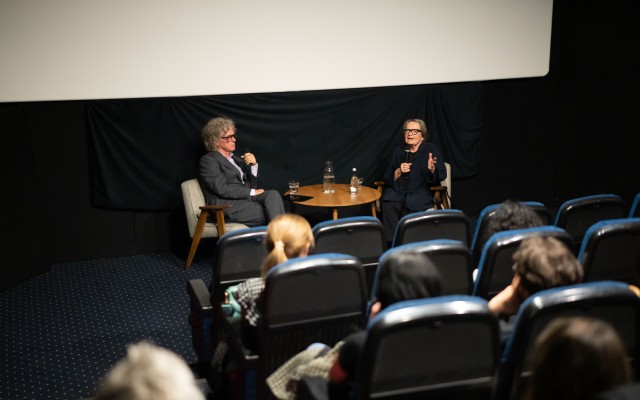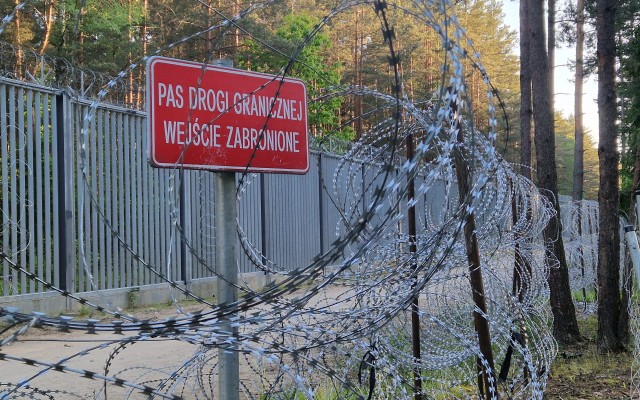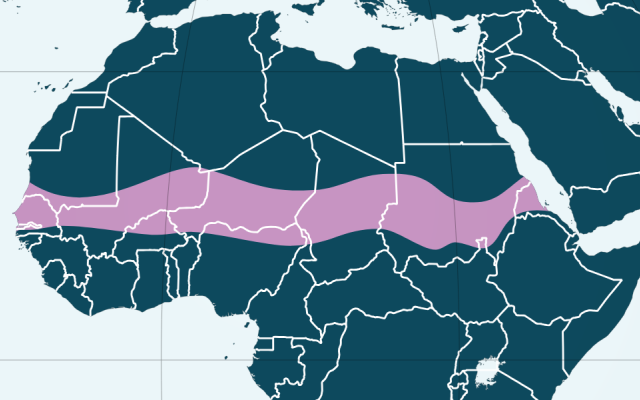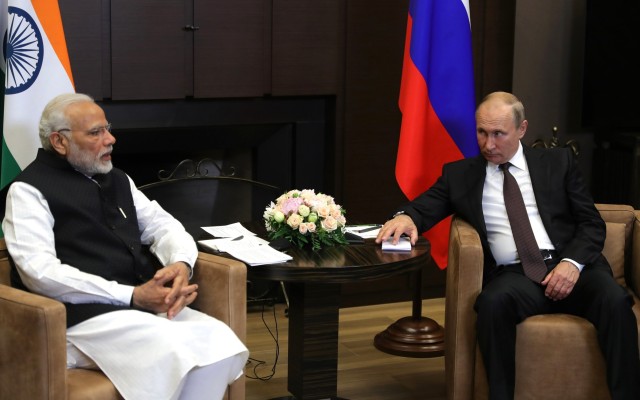
Towards a Deep History of Gaia: Displacements, Integration, and Rights Beyond Migration Myths
by Aurea Mota
Published on: December 16th, 2024
Read time: 14 mins
In this contribution to Bulletin 31, Aurea Mota discusses the radical potential and political limits of rights of nature in the effort to achieve environmental justice.
The prevailing understanding of migration in contemporary political discourse continues to rely on the myth of the enclosed nation as the central driver of internal human development. The historical formation and transformation of the modern state exemplifies this. Benedict Anderson described the nation as a socially constructed community, formed through self-perceptions that distinguish certain groups from others. Benedict Anderson, Imagined Communities: Reflections on the Origin and Spread of Nationalism (London 1983: Verso). This social construction of the idea of modern community perpetuates the myth that the nation, with its system of rights, duties, and protections, bestows privileges upon those within its political boundaries while excluding externalised ‘others’. The long-lasting consequences of these modern myths can be felt in many realms and moments of history because, as social scientists know well, myths can be real at least in terms of their consequences. For instance, the ideas of national attachment and economic growth that have driven conservative and extreme-right movements in many parts of the world since the beginning of the twentieth century have been sustained by the constant resignification of the meaning of ‘belonging’ and of the ‘other’ and its relation to state order.
A contemporary example of the reinterpretation of migration and borders is the European Union (EU). As a supranational entity, the EU should champion diversity, hospitality, and democracy – key elements of European heritage and identity Gerard Delanty, The European Heritage: A Critical Re-Interpretation (London 2017: Routledge). – as part of its foundational principles. The growing number of ‘irregular migration’, as it is called by the European Commission, reached its peak in 2023 when about 355,300 people (the official number) entered the EU without complying with the protocol. All official data from the European Parliament. This and other facts and figures available at: https://www.europarl.europa.eu/topics/en/article/20170627STO78419/countering-irregular-migration-better-eu-border-management (accessed on the 19th November 2024) This has led states such as Germany and the Netherlands to reinstate internal border controls, citing public security concerns in contravention of the Schengen Agreement’s free-movement principles. At the Union level, these policies and other forms of enforcing exclusion undermine the ideal of European hospitality. Josep Borrell’s 2022 controversial – to say the least – speech, describing Europe as a ‘garden’ to be defended from the encroaching ‘jungle,’ The speech and the video are available at: https://www.eeas.europa.eu/eeas/european-diplomatic-academy-opening-remarks-high-representative-josep-borrell-inauguration-pilot_en (accessed on the 19th November, 2024) underscores how European policies have adopted exclusionary measures that betray the modern democratic principle of hospitality. Thus, regional decisions and political preferences determine not only the permeability of nation-states but also that of the EU itself. The differential treatment of Ukrainian refugees after the 2022 Russian invasion, compared to the Syrian refugee crisis since the onset of the 2011 war is an example of this. A powerful portrait of that situation is offered by Agnieszka Holland’s 2023 movie Green Border. Political actions against the entrance of humans into EU territory are only the tip of the iceberg of a larger crisis that we are living through at the moment. In historical terms, the crisis reflects broader modern tensions: grassroots struggles for emancipation and liberty clash with elite-driven (cultural, political, and economic) desires to preserve power and control. Peter Wagner, A Sociology Modernity: Liberty and Discipline (Cambridge 1994: Routledge). As we will see in the last part of this essay, this struggle for emancipation is one that involves not only the recognition of the rights of human beings but also of other ‘natural’ beings that have been excluded from the modern system of nation-driven rights.
This essay departs from this brief critical examination of the modern imaginary concerning the nation, the system of belonging and borders to make comprehensible the other two most pressing challenges of our time: the democratic and climate crisis. The focus of the discussion in the next sections will be on offering a contribution to the development of a historically grounded perspective that represents a basic knowledge expansion to be pursued in order to fight against these connected crises. The reasoning presented in this essay is that to find a way of addressing these crises in the present, a historical reconnection between human and natural history is a key step to understanding theoretically the problems we are facing and finding practical solutions to them.
For a Deep History of Gaia
To fully deconstruct the myth of the nation-state as the foundation of human development, we must consider the longer historical arc of human and natural integration. Migration – of humans and non-humans, such as animals, plants, and sediments – has historically driven environmental adaptation, scientific progress, and intellectual advancements. This is shown by what has been framed as ‘deep history’, Daniel Lord Smail, On Deep History and the Brain (Berkeley 2008: University of California). the long-run integration of natural and human history. The Earth’s ongoing development is one of constant migration, displacement and integration, forming the equilibrium that allowed the emergence of Gaia: a self-regulating ecosystem where life co-evolves in tandem with its environment. James Lovelock, Gaia: A New Look at the Life on Earth (Oxford 1979: Oxford University Press). In his book, Gaia is named after the Greek goddess that represented the Earth. Even though it seems a reasonable statement for most contemporary natural scientists, things have slowly started to move in this direction only very recently. Thus, one can expect that the impact of this interpretation is very much absent in most of the social sciences and historical analysis. Trying to overcome that, in this essay it is argued that we need to start to understand that human history is part of a broader, ‘nationless’ framework Aurea Mota, ‘Uncivilized Civilizations: reflections on Brazil and comparative history’, Social Imaginaries, 2, no. 2 (2016): 71-86. that links human development to the Earth’s natural history. Dipesh Chakrabarty, ‘The Climate of History: four theses’, Critical Inquiry, 35 (2009): 197-222.
James Lovelock’s ‘Gaia hypothesis’, as articulated in Gaia: A New Look at Life on Earth, presents Earth as a self-regulating organism where life and its environment are tightly intertwined in a symbiotic relationship. Lovelock challenged conventional evolutionary theories by suggesting that organisms shape their environment as much as they are shaped by it. This mutual interdependence reveals the Earth as a symbiotic system, where disruptions – such as pollution, deforestation, and greenhouse gas emissions – threaten planetary balance. Lovelock’s later works, including The Revenge of Gaia (2006) and The Vanishing Face of Gaia (2009), warn of tipping points beyond which Gaia’s resilience may fail, leading to catastrophic changes in global temperatures and ecosystems. His insights compel a shift away from anthropocentric worldviews, recognising humanity as one element within a fragile, interconnected system. In these books, Lovelock builds upon the Gaia hypothesis to discuss the impact of human-induced climate change on Earth’s self-regulating systems. In doing so, he added a warning tone to the original hypothesis that wasn’t as pronounced in his earlier writings.
To address these challenges, at both the theoretical and practical level, we need to rethink the established boundary between natural and human histories scientifically. To that end, one of the first structures that should be addressed refers to the discussion about when the history of our existence starts. The history of humanity is traditionally recounted using the Judeo-Christian chronological framework as a guiding principle. In the book On Deep History and the Brain, historian Daniel L. Smail argues persuasively for bridging what he terms the ‘recent past’ – extending no further than 6,000 years ago, with a focus on the last 3,000 years – and the ‘deep past,’ which encompasses everything traditionally excluded from the concept of human prehistory. Smail states that his research purpose is served if we acknowledge that the short chronology is a constructed narrative, that history need not be so narrowly defined, and that a form of ‘history’ began long ago in Africa. Smail, On Deep History, 15.

Aurea Mota speaking at the 2024 ISRF Conference in Warsaw, Poland.
On the one hand, to acknowledge the origins of human history in Africa is to accept that the formation of the world as we know it has been shaped by the movement of groups across different regions. If the world had political boundaries 300,000 years ago, humanity as the form of life that we know today would not exist. Humans evolved out of a unique transformation of physical and behavioural patterns related to the adaptation of the species to different spatialities that it inhabited in different parts of the globe. It has been proved that the development of the human brain is related to the transformations that come from interaction with each other and the surroundings in the different stages of human history. Christopher S. Henshilwood & Curtis W. Marean, ‘The origin of modern human behavior: critique of the models and their test implications’, Current Anthropology, 44 (2003): 627-651. These migrations have influenced the development of the world and, together with what we term ‘natural forms of life,’ have created the balance necessary for the emergence of Gaia. On the other hand, the acceptance of the fact that human history started much before what has been traditionally accepted is the basis for the critical reinterpretation of the human past, present, and future on Earth.
This is so because, against the contemporary dominant imaginary of the world as organised into static, nation-enclosed settled societies, an alternative view informed by deep history is that displacements were and still are the norm in history, indeed the movement of humans will increase drastically in the next years due to climate change. Gaia Vince, Nomad Century: how to survive the climate upheaval (London 2023: Penguin). It follows from this ontological and historical fact that movement, not stasis, was the norm. In that key, Chakrabarty has developed an analysis of the Anthropocene, addressing the epistemic divide historically maintained between ‘Natural History’ and ‘Human History.’ Dipesh Chakrabarty, ‘Climate and Capital: on Conjoined Histories’, Critical Inquiry, 41 (2014): 1-23. Starting from the premise that human beings have become a geological force, thereby erasing the distinction between natural and human history, Chakrabarty explores how the climate crisis appeals to our sense of ‘human universals’ while simultaneously challenging our capacity for historical understanding. Charkrabarty, The Climate of History, 201. This perception of a collective ‘catastrophe,’ driven by humans acting as a geological force, fosters a sense of shared universals. For the purposes of this essay, this discussion aims to illustrate, from an alternative perspective, how overlooked layers of human history can be integrated to reconsider transformations in human history and its connection to what I term the deep history of Gaia.
As with Smail and Chakrabarty, conventional historical narratives must be questioned in light of a significant transformation that emerged with modern developments, particularly the rise of the Anthropocene as the epoch-defining modern existence. As Chakrabarty highlights, climate change debates have profoundly altered our perception of historical time. It is crucial to extend the implications of this transformation to consider a historicity of the Earth that accommodates timeless layers and forms of history. This understanding undermines the unquestioned legitimacy of the modern nation-state as a natural or inevitable framework for human organisation. Instead of this narrative, history must be reintegrated within an Earth context, connecting human and natural trajectories. One of the practical positive consequences that this analysis could bring is to make a clear room for the acceptance that not only humans should be rights holders. To preserve all forms of life and the persistence of Gaia, other forms of beings need to have their history told, embedded in ‘our’ history and system of rights. This is a topic developed briefly in what follows as a way of making it clear that this enlarged conception of history can be a first step for other broader practical transformations to take place.
Displacements, Environmental Justice, and the Rights of Nature
A deep historical method is an important tool to be applied not only to theoretically criticise the superficial view of migration as a bad thing for development, by showing how migration is the very basis of human development and the formation of human cognitive capacity. The drive in the direction of a deep history of Gaia is also a necessary step to understanding a key issue of environmental justice: namely, the emerging issue of the Rights of Nature (RoN). There are many examples of countries that passed laws or changed the constitution to incorporate RoN. To mention a few: Bolivia, Colombia, Ecuador, New Zealand, Spain, USA, etc. To see a map with all the countries that have implemented RoN, look at: https://www.garn.org/rights-of-nature-map/ In Ireland, the “Report and Recommendations of the Citizens’ Assembly on Biodiversity Loss” released in March 2023 is assertive when said that in the country ‘should be a referendum of the people to amend the Constitution to protect biodiversity.’ It is not clear if that is going to happen. In any case, this steep move forward by Ireland is the first one observed in Europe in the direction of changing the constitution to incorporate RoN. Western legal systems, rooted in the separation of nature and culture, have historically justified the exploitation of natural ‘resources’ by humans as rights holders. In this system, nature has been treated as an object to be dominated rather than a subject with intrinsic value. However, many societal groups conceptualise nature as a subject integrated into a non-hierarchical worldview. To say that nature is composed of different kinds of subjects is not the same as saying that this subject, i.e. ‘nature,’ has subjectivity, in the sense of the capacity of self-reflection or being able to originate by themselves what Castoriadis has called a radical imaginary. Cornelius Castoriadis, ‘Radical imagination and the social instituting imaginary’, in D.A. Curtis (ed.) The Castoriadis Reader (Oxford 1997: Blackwell): 321–337. Recognising nature’s rights challenges anthropocentric frameworks and calls for embedding humanity within a life-centric model of existence.
The integration of RoN as a movement towards ecological justice requires rethinking humanity’s role within the Earth system. Modern systems of rights must evolve to reflect this interdependence, embedding human agency within a broader ecological context. Doing so would address the anthropocentric assumptions that have driven unsustainable exploitation and inequality during the modern era. The Anthropocene compels a profound shift in how we research and narrate history. It is a history where human and natural timelines converge into a deeper historical timeframe, in which life has been displaced and replaced to ensure the conditions of our existence. It would be the time now to slow down anthropocentric reasoning – playing with an idea that comes from the Belgian philosopher of science Isabelle Stengers Isabelle Stengers, Another Science is Possible: A Manifesto for Slow Science (Cambridge 2017: Polity Press). – and move in the direction of life-centric reasoning if contemporary societies want to be able to address the climate and democratic challenges of our contemporary times.
The quest for global environmental justice must consider (re)embedding all forms of life within a space less rooted in isolated nations and more aligned with the Earth’s ecosystemic condition. A full history where all histories – natural and human – merge beyond the human timeframe is very much needed. This is a deep history of Gaia. A history of lives (human and ‘natural’) in motion, seeking better conditions of existence and evolving within spaces that, only much later, were divided by political borders. Within this context, the modern history of nation states, defined by political boundaries, need no longer be regarded as a ‘natural fact.’ Instead, it can be understood as part of a relatively recent political imagination – one that, like any other construct, can be reimagined and transformed. The same ‘denaturalization’ would have practical implications for our shared understanding of rights and belonging. Opening the doors to seeing that the challenges of the Anthropocene require us to accept that other beings are part of our history, and without creating the structure to keep them existing, like by granting them rights, our present and future history is fading.
See also...
Feature image by Stuart Wilson.
Conference image by Marcus Hessenberg.
Bulletin posts represent the views of the author(s) and not those of the ISRF.
Unless stated otherwise, all posts are licensed under a Creative Commons Attribution-NoDerivatives 4.0 International License.
Acknowledgements
This short essay text was written while holding a visiting fellow position at The Humanities Centre for Advanced Studies “Futures of Sustainability,” University of Hamburg, Germany. I am deeply grateful for the support I received and for the insightful comments that emerged from discussions with my colleagues on various occasions throughout my stay. I also would like to thank my colleagues for the comments they made to my presentation on the topic during the conference the ISRF 2024 Conference Migration, Democracy and Climate Change.



